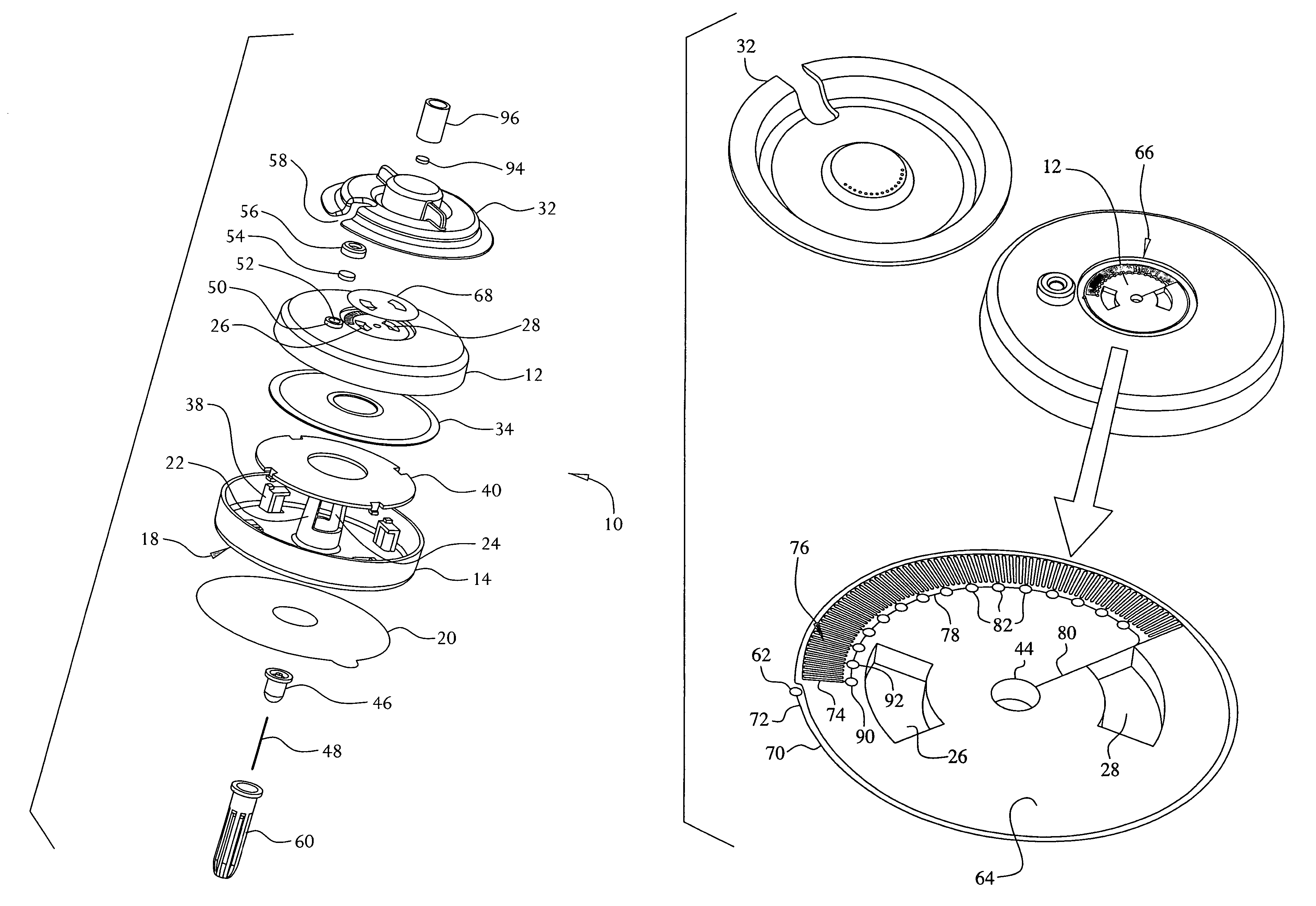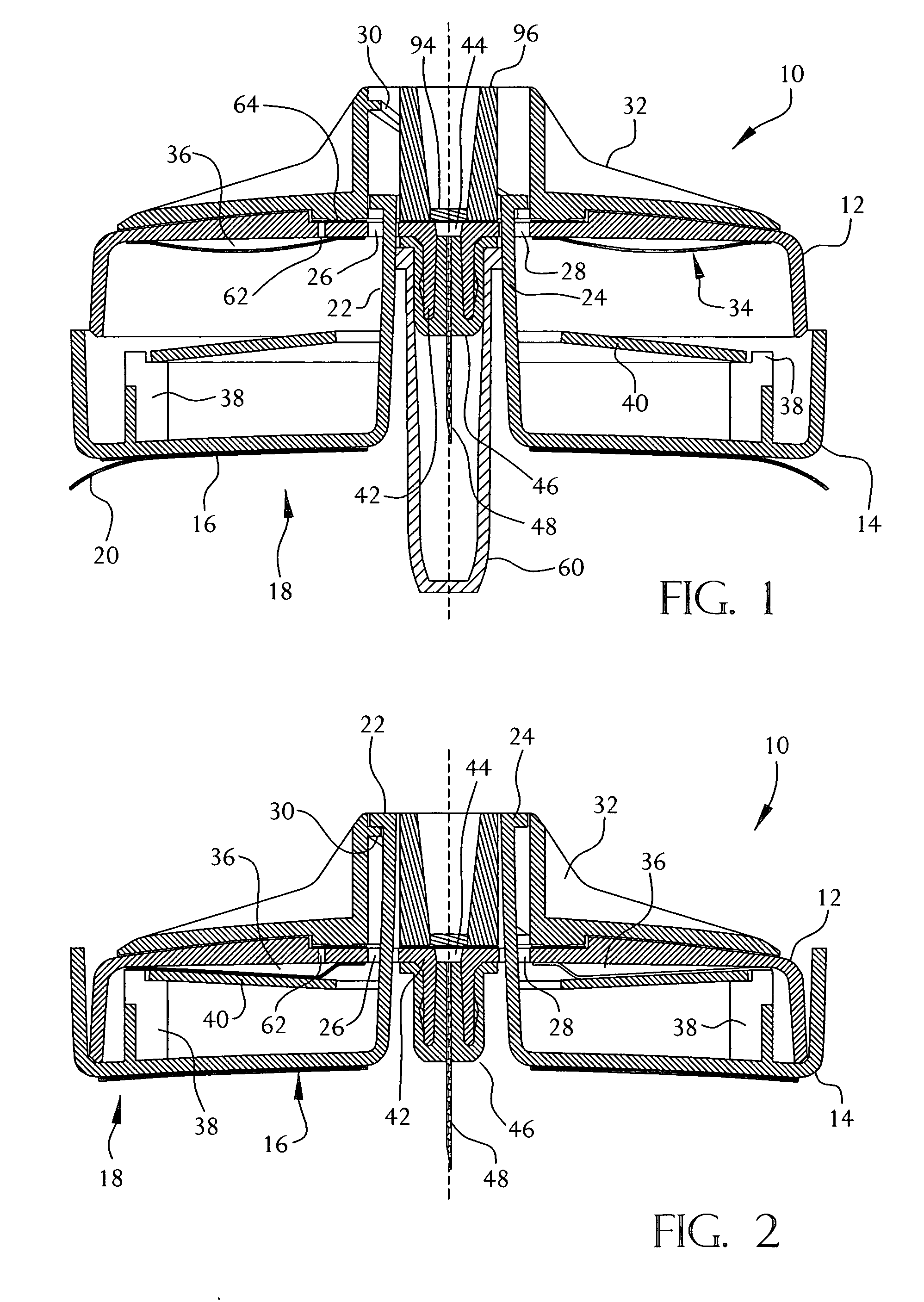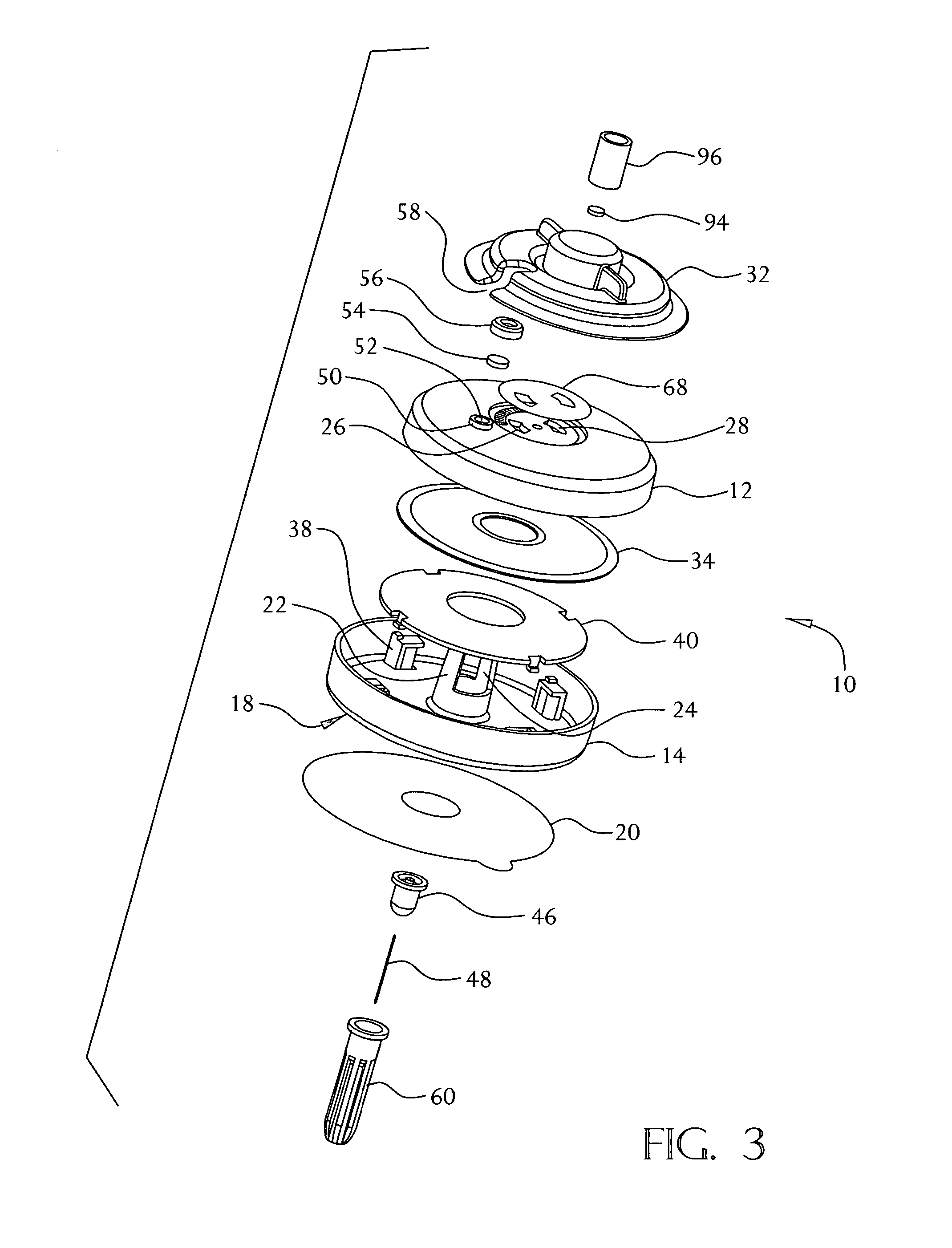Constant rate fluid delivery device with selectable flow rate and titratable bolus button
a fluid delivery device and constant rate technology, applied in the direction of other blood circulation devices, process and machine control, instruments, etc., can solve the problems of organ failure, organ failure, neuropathy, and inability to control glucose levels,
- Summary
- Abstract
- Description
- Claims
- Application Information
AI Technical Summary
Benefits of technology
Problems solved by technology
Method used
Image
Examples
first embodiment
[0034]A fluid delivery device constructed in accordance with the present invention is shown in FIGS. 1-5. The device 10 may be used for the delivery of a liquid medication, preferably but not necessarily insulin, by continuous infusion into or through the skin of a patient. The device 10 is intended to be worn on the surface of the skin by the user, with a cannula (hollow needle) penetrating into the user's skin or transcutaneously through the skin into the subcutaneous tissue. The device 10 does not require any electronic components, and is intended to be simple and inexpensive to manufacture while providing a selectable constant flow rate of medicament to the patient. Although the present invention is not limited to specific dimensions, the device 10 preferably has an overall size (excluding the delivery cannula and the cannula shield 100) of about 50 millimeters in diameter and 12 millimeters in height. The delivery cannula may be rigid or flexible and may have any desired length...
second embodiment
[0061]Finally, referring to FIGS. 11-13, the second embodiment also includes a bolus port on the top of the unit to enable the user to immediately inject a measured quantity of medicament directly into the skin through the unit's needle 216. This allows the user to take a quick dose of medication without having to resort to an additional needle stick. The bolus port is incorporated into the hub 252 retaining the selector knob 222 to the top of the top cover 212. The port is ultrasonically welded to the top surface of the top cover 212 thereby trapping the elastomeric septum 254 between the membrane seal 68 and the bolus port. In this manner, the septum 254 acts as a self-sealing needle port, connecting directly to the node immediately upstream of the needle 216. The bolus port can be used at any time during which the unit is adhered to the body and the needle is set into the skin.
PUM
 Login to View More
Login to View More Abstract
Description
Claims
Application Information
 Login to View More
Login to View More - R&D
- Intellectual Property
- Life Sciences
- Materials
- Tech Scout
- Unparalleled Data Quality
- Higher Quality Content
- 60% Fewer Hallucinations
Browse by: Latest US Patents, China's latest patents, Technical Efficacy Thesaurus, Application Domain, Technology Topic, Popular Technical Reports.
© 2025 PatSnap. All rights reserved.Legal|Privacy policy|Modern Slavery Act Transparency Statement|Sitemap|About US| Contact US: help@patsnap.com



